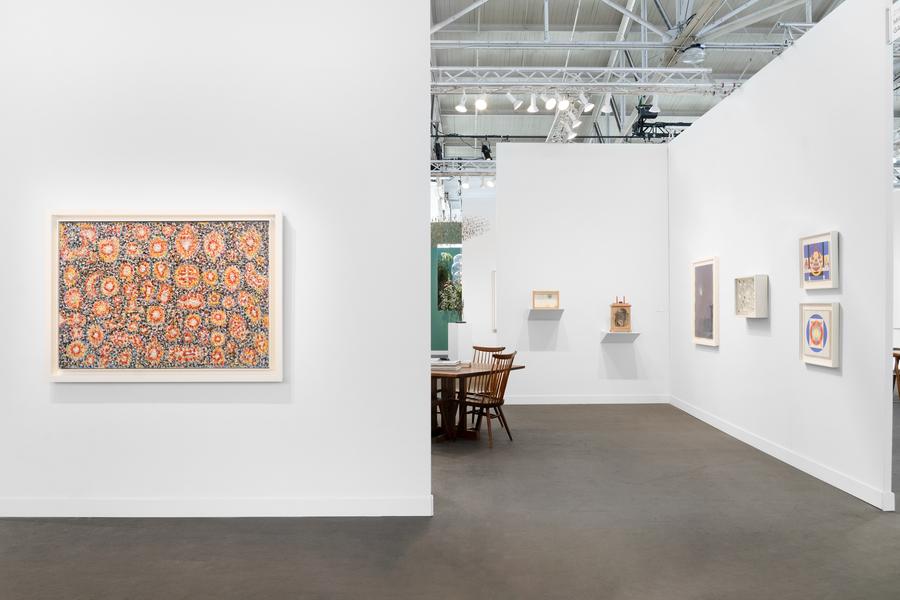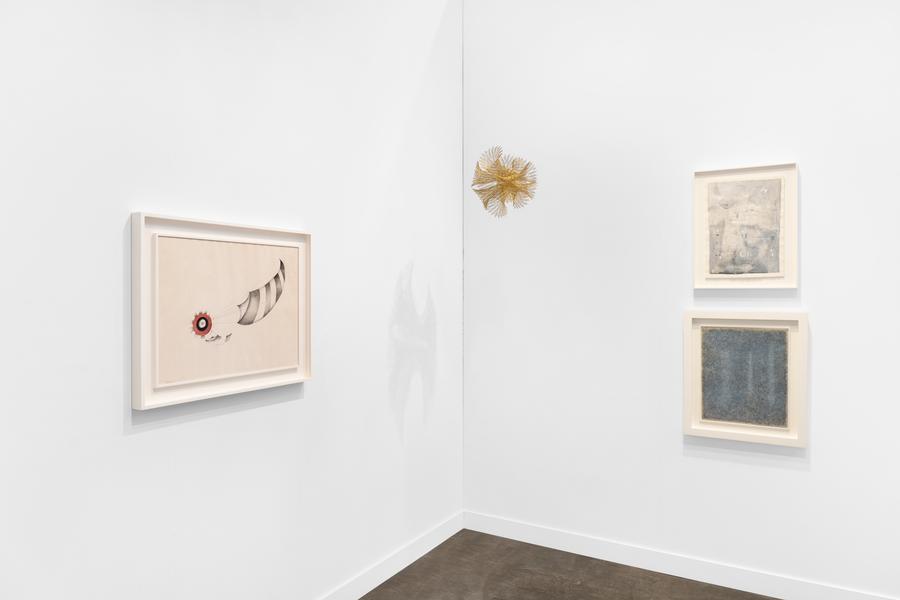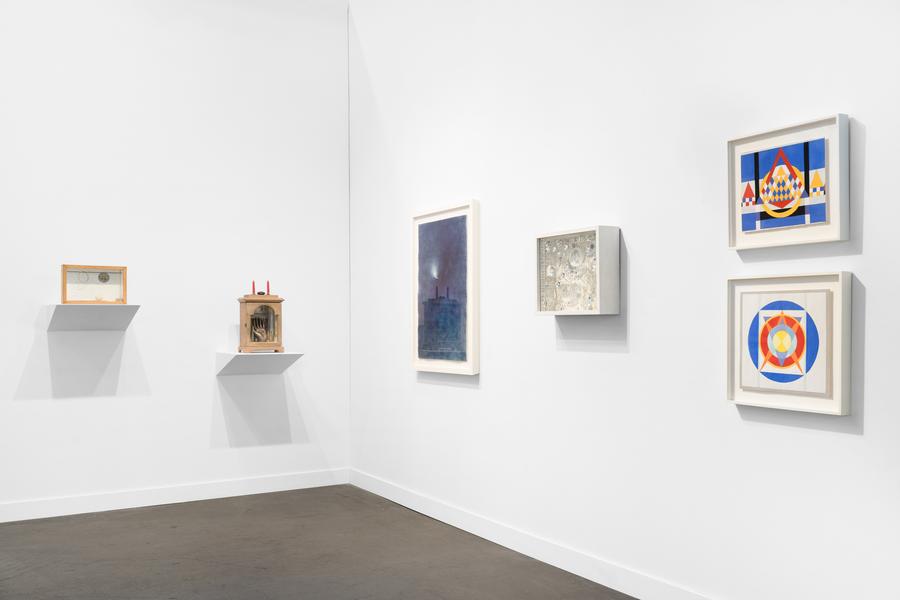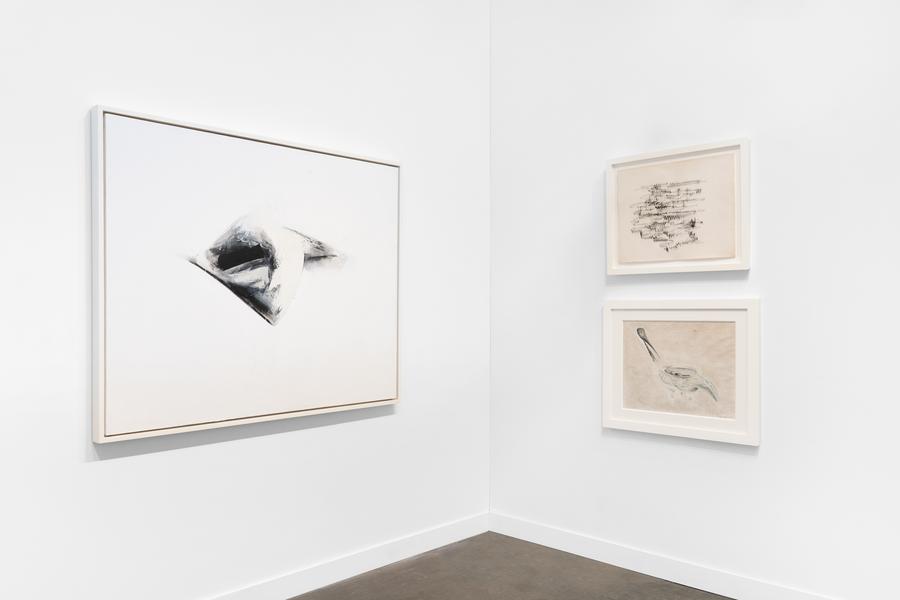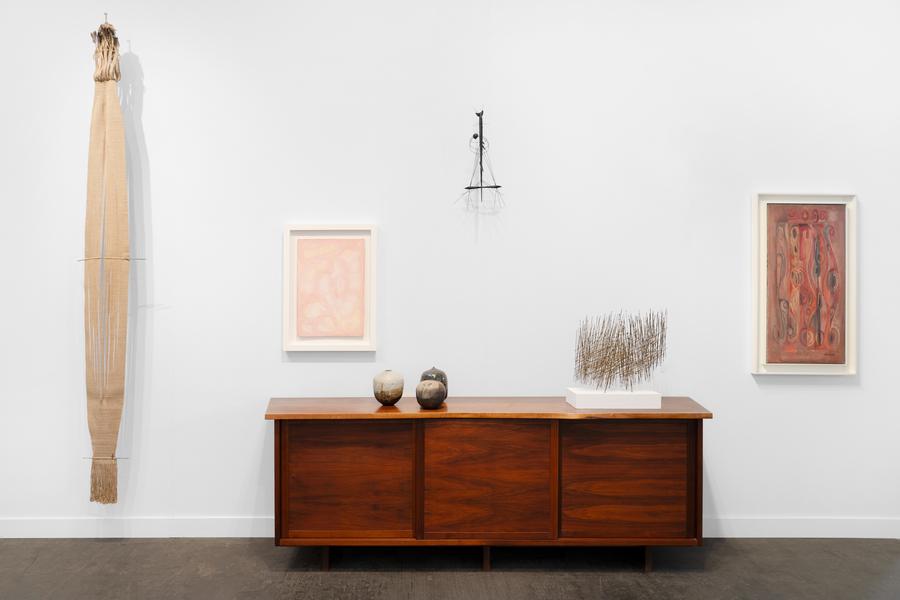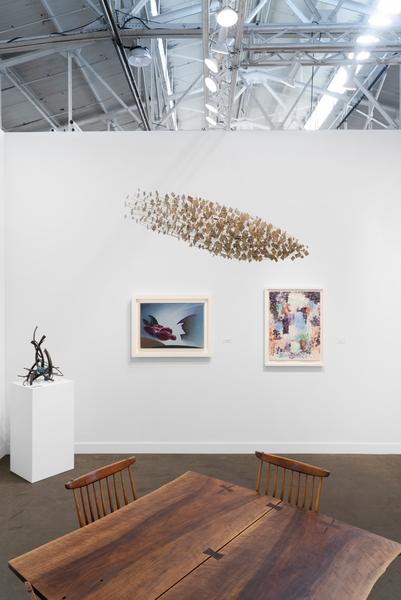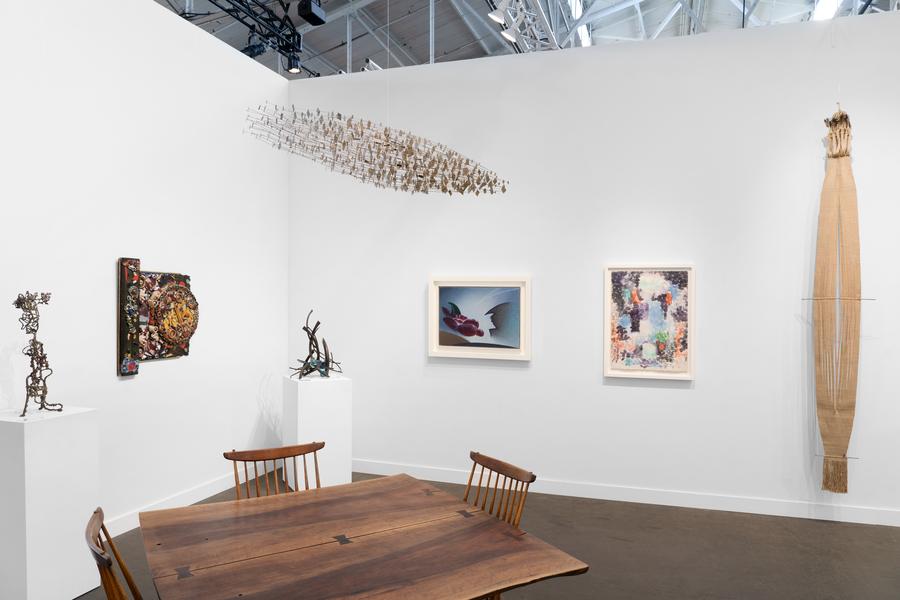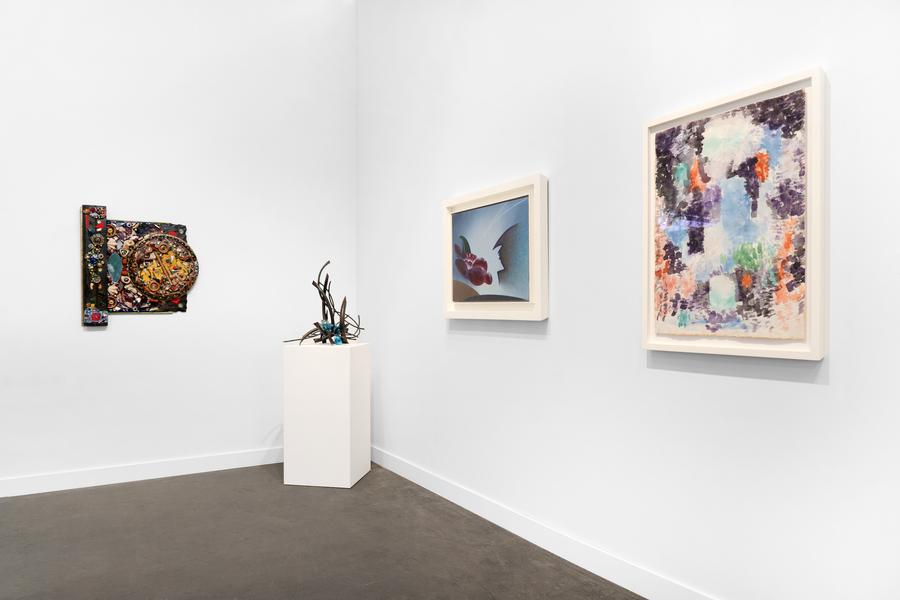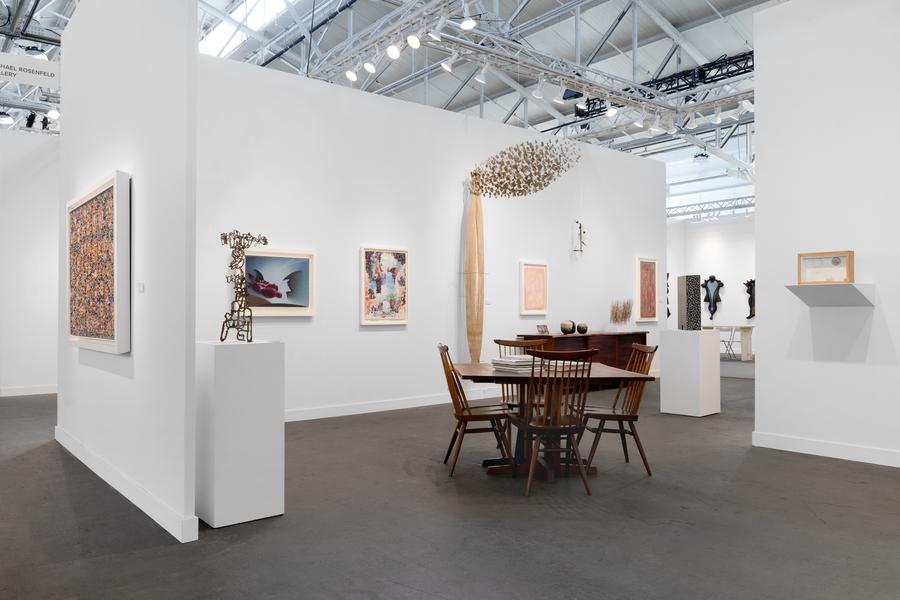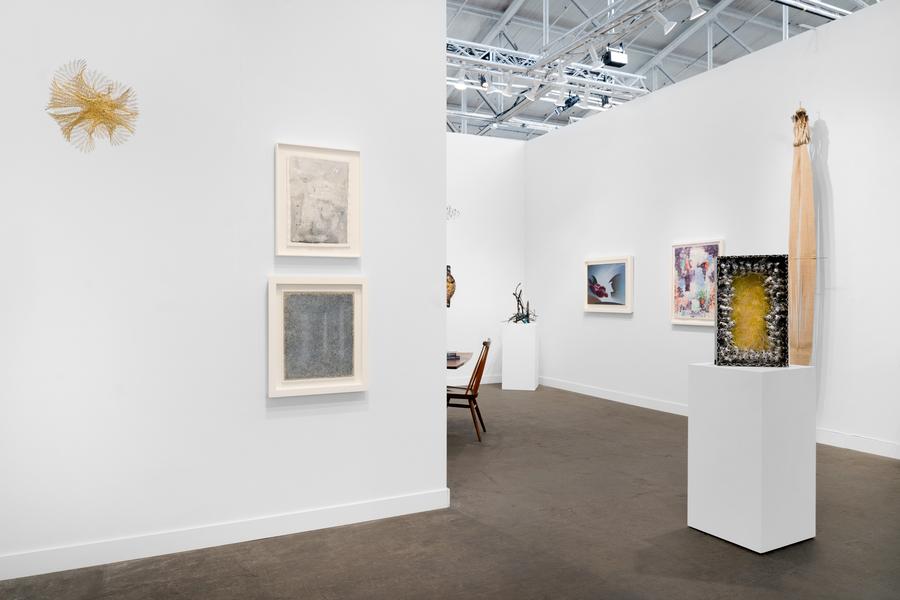Preview Gala
Wednesday, January 17, 4–10PM
Public Days
Thursday, January 18, 11AM–7PM
Friday, January 19, 11AM–7PM
Saturday, January 20, 11AM–7PM
Sunday, January 21, 11AM–5PM
Visit Michael Rosenfeld Gallery at Booth 211
Michael Rosenfeld Gallery is pleased to participate in FOG Design+Art 2024 with a group exhibition celebrating the generative influence Eastern thought and aesthetics had on American art of the last hundred years. Featured artists include Leo Amino, Ruth Asawa, Mary Bauermeister, William Baziotes, Harry Bertoia, Lee Bontecou, Joseph Cornell, Harold Cousins, Jay DeFeo, Beauford Delaney, Claire Falkenstein, Morris Graves, Lee Krasner, Yayoi Kusama, Ibram Lassaw, Jacob Lawrence, Norman Lewis, Alfonso Ossorio, Agnes Pelton, Richard Pousette-Dart, Betye Saar, Sonja Sekula, Toshiko Takaezu, Lenore Tawney, Alma Thomas, Mark Tobey, Charmion von Wiegand, and William T. Williams. In complement to a rich selection of painting, sculpture, collage, ceramics, and works on paper dating from 1938 to 2019, Booth 211 also features furniture by George Nakashima (1905–1990), one of the leading design innovators of the twentieth century and a father of the American craft movement.
Over the last thirty-five years, Michael Rosenfeld Gallery has organized numerous group and solo exhibitions that have focused on the influence of Eastern thought and traditions on American artists. The gallery’s dedication to exposing audiences to this aspect of American modernism stems not only from its historical under-recognition, but also from the profundity of its effect, which is aptly summarized by Guggenheim curator Alexandra Munroe in her text for the landmark 2009 exhibition The Third Mind: American Artists Contemplate Asia, 1860-1989: “What emerges [from studying the influence of Eastern thought in the U.S.] is a history of how artists working in America selectively adapted Eastern ideas and art forms to create not only new styles of art, but more importantly, a new theoretical definition of the contemplative experience and self-transformative role of art itself. The Asian dimension also gave a universalist logic to the modern and neo-avant-garde premise that art, life, and consciousness are interpenetrating realities unified by an existential concreteness.”
Michael Rosenfeld Gallery’s FOG presentation will feature several standout sculptures from mid-century. S.391/50 (c.1958), a crocheted wire sculpture by Ruth Asawa (1926–2013), is exceptional for its golden patina—a rare quality in Asawa’s body of sculptures. S.391/50 takes the form of six double-sided, trumpet-like shapes that expand outward from a central void, embodying the tension between formal opposites that is at the heart of her practice: positive and negative space, lightness and weight, individual line and overall form. Evoking the impression of hay illuminated by sunlight, Untitled (c.1963–64) is an exceptional sculpture by Harry Bertoia (1915–1978); composed of bronze-coated steel wires that have been meticulously welded into a complex, freestanding sculpture, Untitled testifies to Bertoia’s refined metalworking abilities and his deep spiritual connection to the natural world. Finally, Untitled (Fusion) (c.1970) by Claire Falkenstein (1908–1997) is a standout example of her iconic Fusion sculptures, wherein molten glass cascades through intricately composed, calligraphic copper structures.

